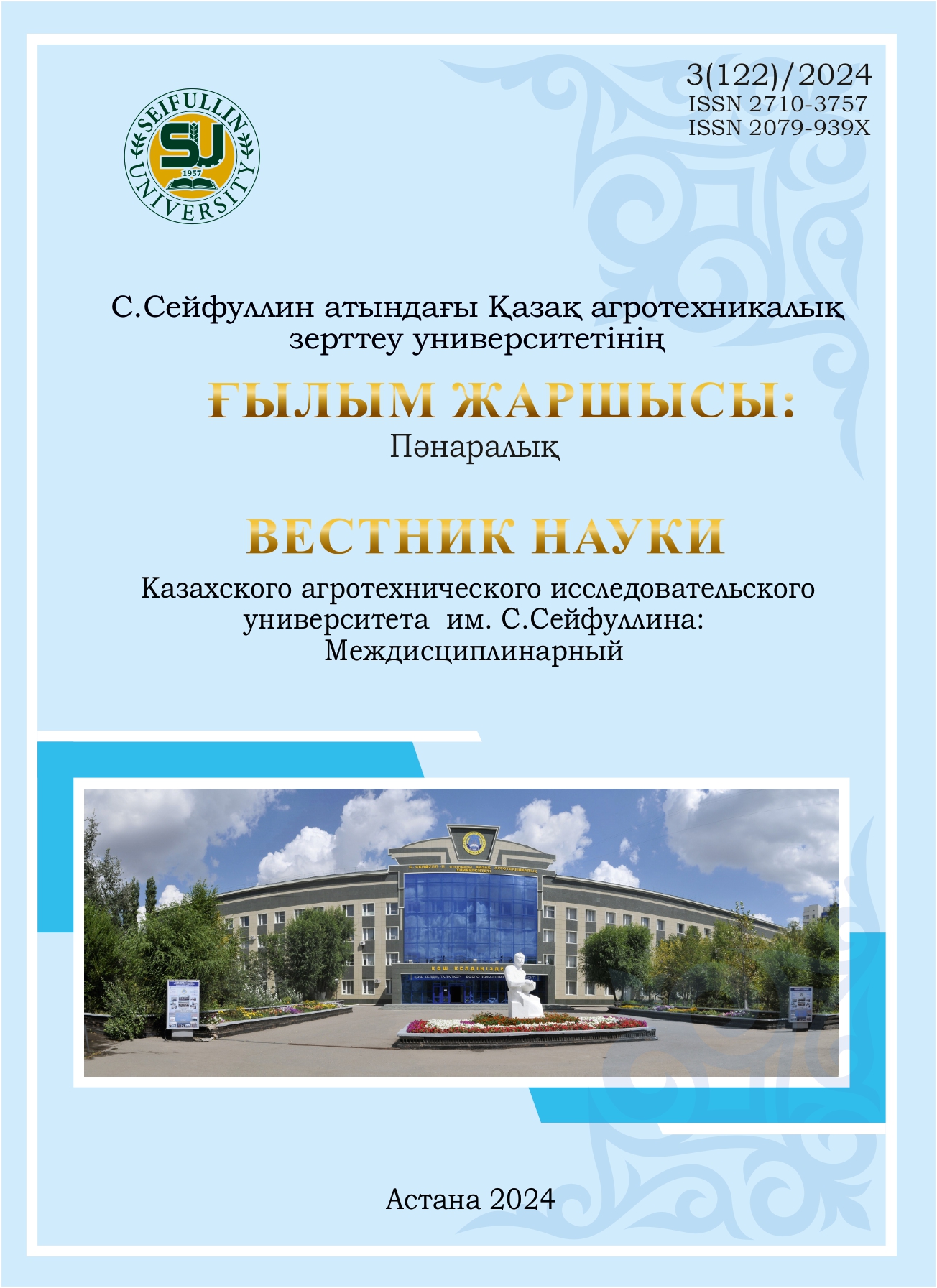Breeding work with kazakh horses Zhabe type
##plugins.pubIds.doi.readerDisplayName##:
https://doi.org/10.51452/kazatu.2024.3(122).1756Ключевые слова:
exterior; live weight; measurements; STR markers; selection.Аннотация
Background and Aim. Kazakh horses of Zhabе type differ from local horses in their higher live weight and larger body measurements. Breeding work with Kazakh horses of the Zhabе type is carried out at Tailak farm in Zharminsky district of East Kazakhstan through targeted reproduction, cultivation, and widespread use of the best individuals based on their origin, exterior, productivity, adaptation to year-round grazing, and quality of offspring from stallions and mares. Individuals that are not up to these standards are strictly culled. The aim of the research is to determine meat productivity and study genetic characteristics of a sample of modern population of Kazakh horses of Zhabe type using DNA markers.
Materials and Methods. The material for the study was DNA genotyping data from 20 horses of the Kazakh breed type Zhabe. The horses were genotyped according to 17 STR lоci rеcommended by the Internаtional Sоciety for Animаl Gеnetics (ISАG). The international alphabetical code was used to identify alleles. Genetic and population analyses were performed using the GenAIEx software 6.5. The follоwing indicаtors wеre calculаted: the averаge numbеr of allеles per lоcus (Na), the effеctive numbеr of allеles (Ne), levеls of expеcted (He) and obsеrved heterozygоsity (Ho), and inbreеding cоefficient (FIS) .
Results. A study on 17 STR loci of DNA in Kazakh horses Zhabе type has shown that they have a unique allele pool with a significant number of identified alleles and high genetic variability. The average inbreeding coefficient (FIS) is negative (-0.059), indicating that the genetic diversity of this breed is preserved within this group.
Conclusion. The improvement of these horses is achieved through breeding and cultivation of animals with high genetic potential for productivity, which is passed down through generations of descendants. This is done by carefully selecting horses with desirable traits for breeding.

